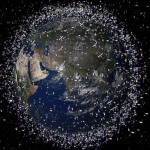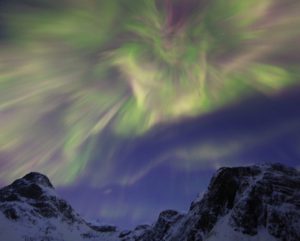 Fire in the sky!
Fire in the sky!
From http://spaceweather.com
GEOMAGNETIC STORM WARNING: A high-speed stream of solar wind is about to hit Earth’s magnetic field, prompting NOAA forecasters to estimate an 85% to 90% chance of geomagnetic storms on Nov. 2-3. This is the same 800 km/s stream that lashed Earth’s magnetic field in early October, sparking strong geomagnetic storms and bright auroras over northern-tier US states. Visit http://spaceweather.com for more information and updates.
TAURID FIREBALLS: The annual Taurid meteor shower is underway and it is lighting up the midnight sky with bright fireballs. Taurid meteoroids are gravelly pieces of debris from Comet Encke that strike our planet’s atmosphere at 70,000 mph. They pose no danger to people on the ground as they disintegrate entirely high above Earth’s surface every few hours. If forecasters are correct, the display could continue until Nov. 10th. Tune into Space Weather Radio for live radar echoes.
From http://astronomy.com/  MILLIONS OF BITS OF SPACE JUNK — leftover fragments from spacecraft and related debris — orbit Earth, and the majority of these will eventually fall into Earth’s atmosphere and incinerate. Astronomers believe they have recently observed one of these pieces and, for the first time, they can predict when and where it will enter the atmosphere. Such forecasts could allow scientists the opportunity to observe these events to better understand what happens when space debris — manmade or natural — comes in contact with the atmosphere and determine which objects might be hazardous to humans.
MILLIONS OF BITS OF SPACE JUNK — leftover fragments from spacecraft and related debris — orbit Earth, and the majority of these will eventually fall into Earth’s atmosphere and incinerate. Astronomers believe they have recently observed one of these pieces and, for the first time, they can predict when and where it will enter the atmosphere. Such forecasts could allow scientists the opportunity to observe these events to better understand what happens when space debris — manmade or natural — comes in contact with the atmosphere and determine which objects might be hazardous to humans.
“Artificial objects can have a coat of paint on their surfaces, and oftentimes that paint has titanium oxide in it. This does not occur naturally, so if the object’s spectrum indicates the presence of titanium oxide, we can know it’s definitively artificial.”
The Catalina Sky Survey (CSS), a project based near Tucson that searches the sky for comets and asteroids, particularly those that could potentially impact Earth, detected the object on October 3. Soon after this discovery, astronomers realized that the CSS had also imaged the object in 2013. Comparing the two observations allowed the scientists to determine its orbit, which looked much more like that of typical space junk than a natural body. They also concluded that it would enter Earth’s atmosphere on November 13 over the Indian Ocean, in the vicinity of Sri Lanka.
Continue reading Auroras, Taurids, Space Debris →


![[]](https://gallery.mailchimp.com/0c5fce34d5ca05f64a13d085d/images/58a29f6b-b93b-4a2d-8c40-f8b9b8c745c0.jpg)

